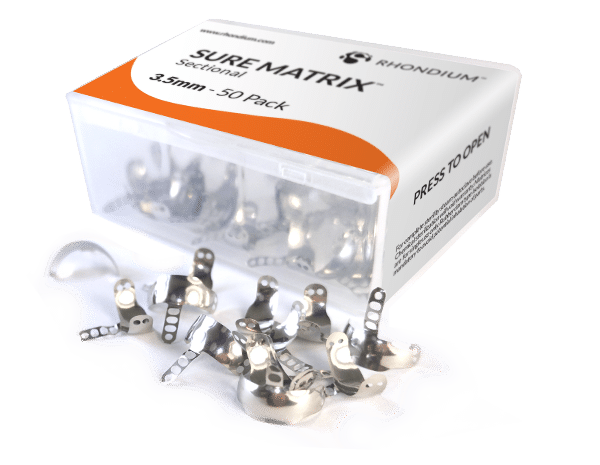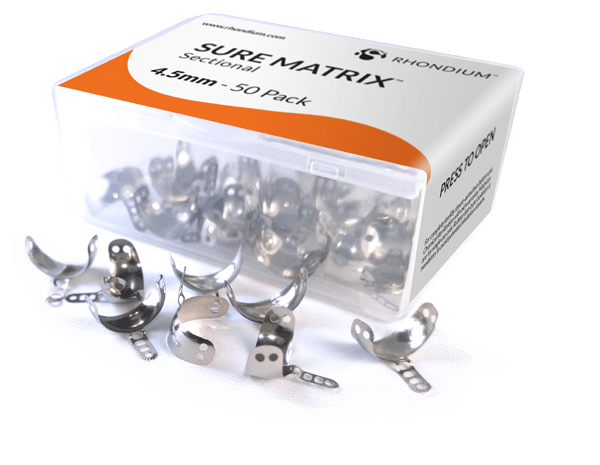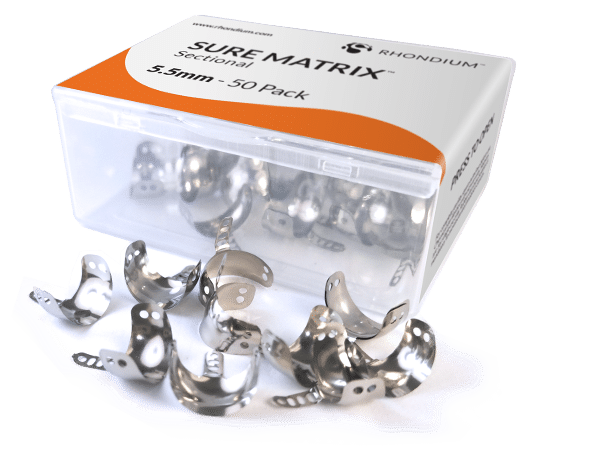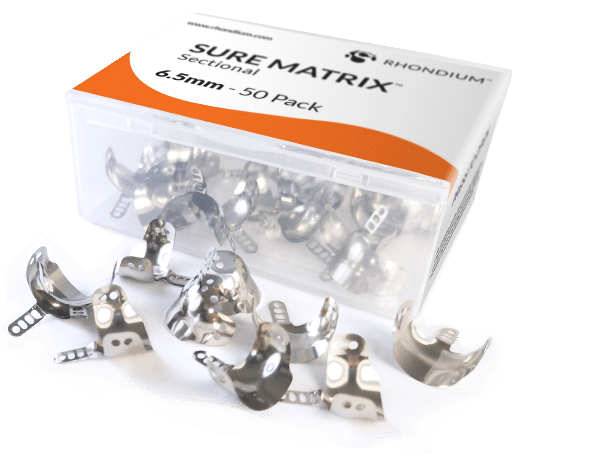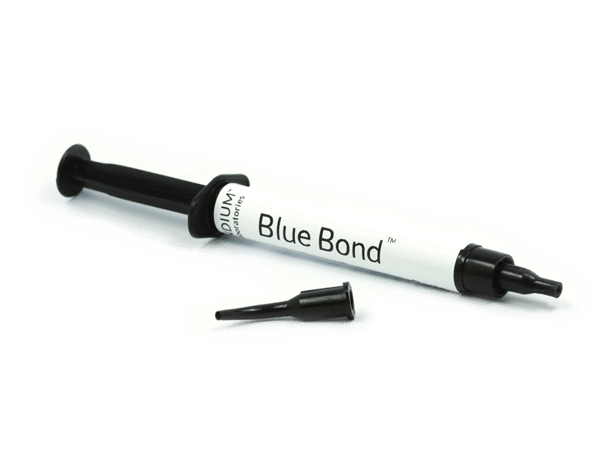Sure Matrix Frequently Asked Questions
Some of our dentists routinely paint some dental bond on the adjacent tooth ( without etching) before placing the blue bond to assure good bonding.
Use a enough Blue Bond to cover most of the holes in the tab. The pulling force is discussed below.
If there is a fresh composite filling on the adjacent tooth the bond can be too strong. See FAQ below: How do I attach the tab with Blue Bond when there fresh composite on an adjacent tooth?
Pre-wedging with a Separator Wedge before cavity prep has the following benefits:
- Starts tooth separation early
- Compresses the gingival col so that the wedge sits lower down
- Protects the gingival col and rubber dam from being nicked by the burs.
- If the Separator Wedge is not tight, move up one size.
The Rhondium Cementing Wedge is excellent for raising deep margins. Push it in deeply without a matrix band and build up the first increments of composite and cured. You can then remove the Cementing Wedge and continue completing the restoration.
Use a fine carving instrument to pull the marginal ridge composite away from the matrix. Then use a blunt hand instrument and push the composite back towards the matrix. Do this carefully in small stages and check that it has formed the desired shape. If you are unhappy with the contours, repeat the process.
For a premolar, we want a round and narrow contact and only a light pulling force is required. Note that the contact point on an upper premolar is more buccally placed and therefore the tab also needs to be placed more buccal too.
For a molar with a flatter contact point, you need to pull with more force. As you pull on the long tab, watch the dimple forming at the contact point and this gives you an indication of how wide the contact will be.
Since the matrix is held firm against the adjacent tooth’s contact point there is no need to burnish. The dimple that forms in the matrix at the contact point demonstrates how flat the contact point will be.
No because the matrix is already firmly attached to the adjacent tooth.
This means that is easy and convenient to fill and cure both mesial and distal cavities simultaneously, which is a good time-saver.
Prior to this new development, many clinicians have been trained to place the first increment of flowable or composite and to press against the matrix while curing. Although this method works, it has some undesirable affects such as distorting the contact point and often creating a point contact rather than a broad contact. Also the hand instrument can become embedded in the composite and can even cause the composite to crack while removing the instrument.
If you pre-wedge before prepping and push the wedge in harder after a few minutes, you will get tight contacts every time. Make sure that the wedge is tight, otherwise select a larger size.
As the teeth separate the matrix will stay in contact with the adjacent tooth since you have bonded it to that tooth. This does not happen with usual clinical procedures since the wedge pushes the adjacent tooth away from the matrix.
Our matrices are made with 35-micron foil. This is only the thickness of one fine hair and our Separator Wedges easily create this much movement. You can confirm this yourself, by pre-wedging while the local anaesthetic is working and then try sliding a matrix between the contact point. You will find that it will pass through, proving that you have separated the teeth by at least one matrix thickness.
Blue Bond can be too strong when bonded to freshly cured composite and this can become an issue if the adjacent tooth has just been restored.
One simple option is to skip the idea of bonding the tab to the adjacent newly restored tooth and use a separating ring and your regular sectional matrix procedure in this case. You can still use the Sure Matrix and Separator Wedge.
The other solution is to apply an air-thinned layer of KY Jelly. And then apply the Blue Bond over the new occlusal restoration. This creates a bond that is strong enough to hold and also pulls off in one piece when removing the matrix. We have tested glycerine, did not work as well as KY Jelly and is not recommended.
IF this happens, simply apply a bonding agent under the Blue Bonded tab, then a small amount of Blue Bond and then pull on the tab again with a probe and light cure.
In these cases apply a bonding agent to the tooth/surface where the tab will sit, then add Blue Bond and light cure

